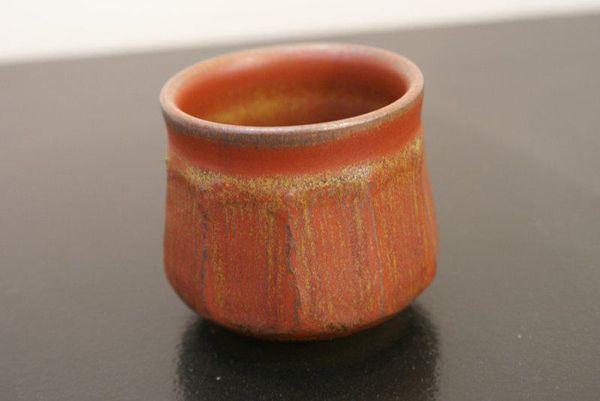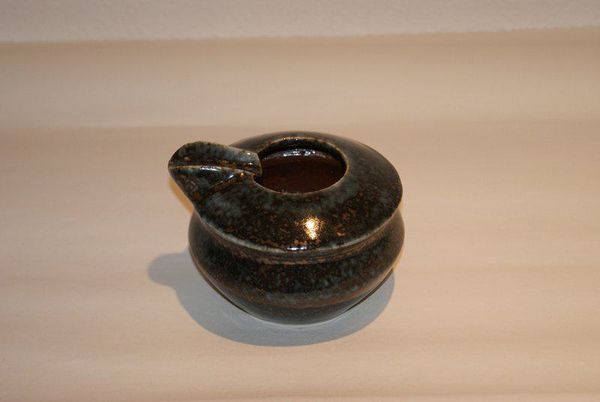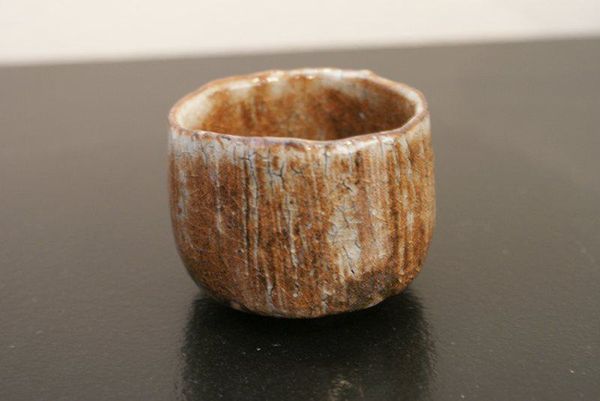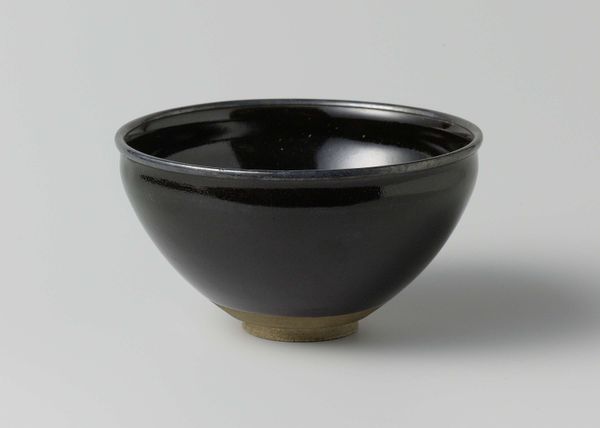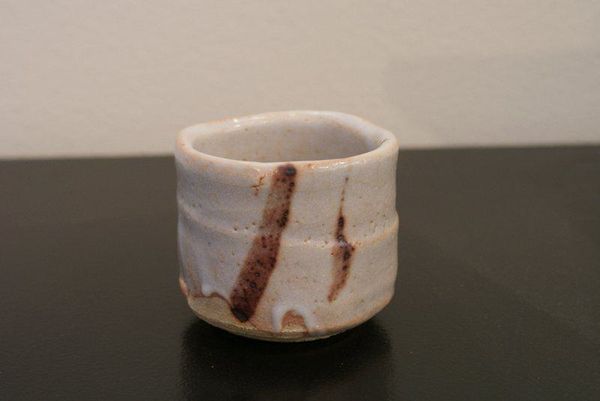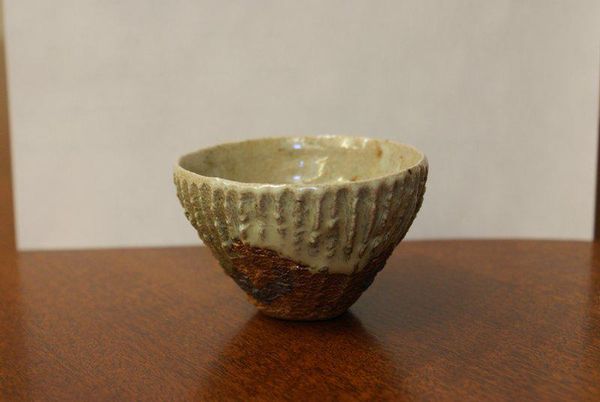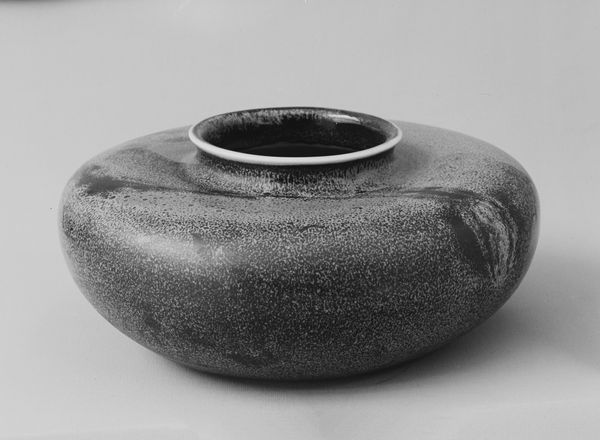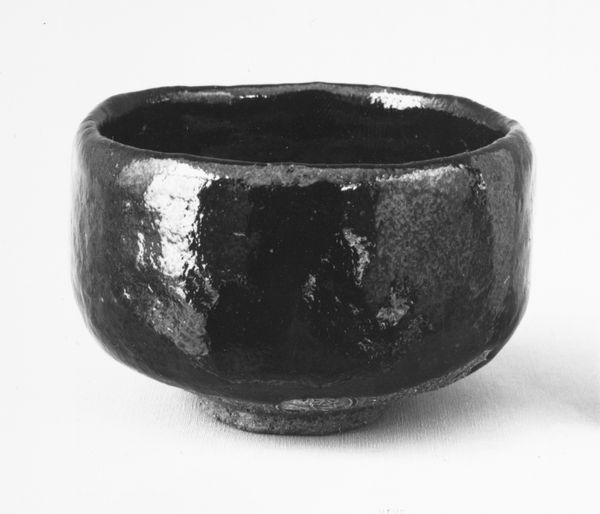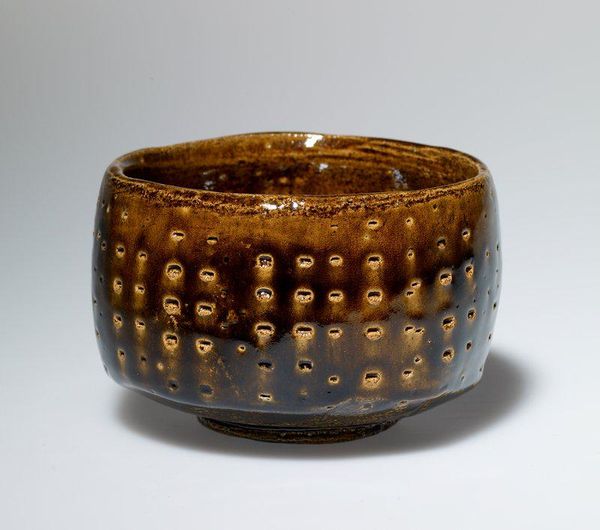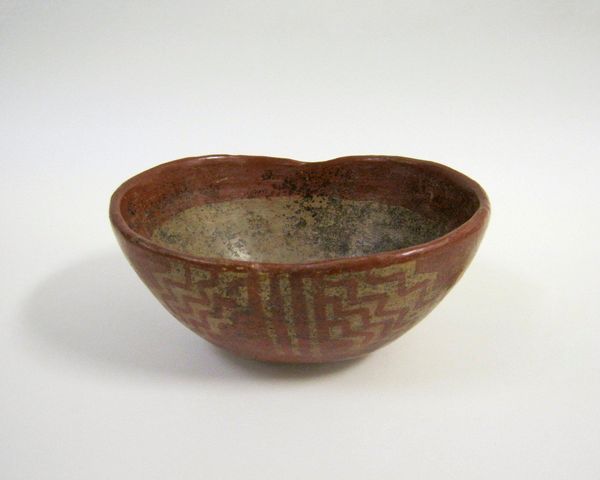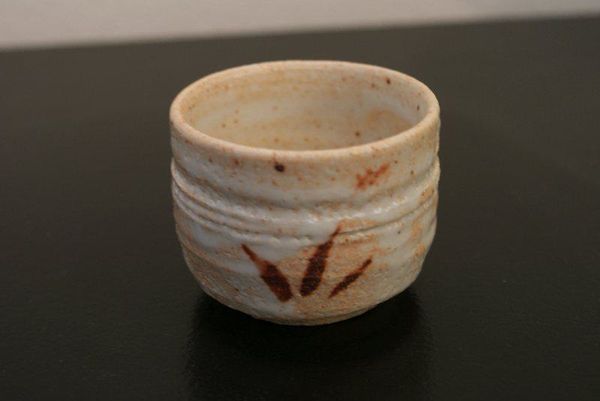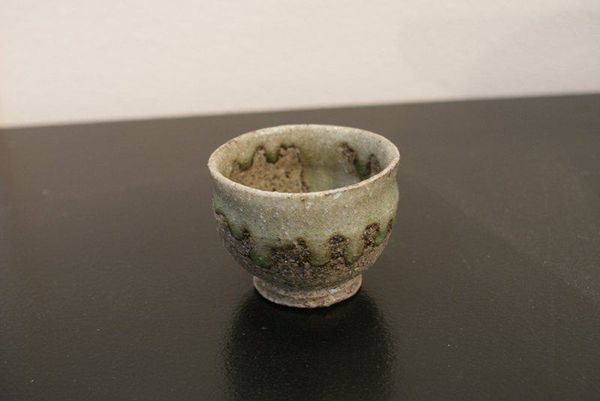
ceramic, earthenware
#
asian-art
#
ceramic
#
japan
#
earthenware
#
stoneware
#
abstraction
Dimensions: 3 11/16 × 4 3/4 × 4 11/16 in. (9.37 × 12.07 × 11.91 cm)
Copyright: No Known Copyright
Editor: Right next to me is a “Black Raku Tea Bowl” by Kitamura Tatsuo, made sometime before 2006. It’s ceramic and earthenware… and feels weighty just looking at it, almost like holding cooled lava. What should we be paying attention to? Curator: Focus on the means of production here. Raku ware, particularly black Raku, involves a very specific firing process and aesthetic sensibility deeply rooted in the Japanese tea ceremony. Notice the rough texture and the seemingly accidental red markings. Editor: Accidental? Curator: Controlled accidents. It's about harnessing chance occurrences within a carefully orchestrated process. Raku often involves rapid temperature changes and removal from the kiln while still hot. How do you think that impacts the final product? Editor: It makes me think of the labor involved. Unlike mass-produced ceramics, this speaks of intense, skilled manual work. And I guess the red markings, the glaze's unpredictable dance with the heat, are valued as integral to the piece, aren’t they? Not defects. Curator: Precisely! The 'perfect imperfection' is celebrated. This challenges the traditional boundaries between ‘high art’ and craft. This teabowl is about materiality – earth, fire, hand – and the social context of its ritual use. Consider how the act of creating, the physicality of the materials, elevates a humble object. Does the lack of mass production change your interpretation of it? Editor: Absolutely, knowing how it was created changes my perception entirely. It makes you consider the history of use, the rituals, even the commerce surrounding the tea ceremony itself. I'm thinking now about the whole production line of a bowl, starting with earth. Curator: Exactly. By focusing on material processes and labor, we move beyond simple aesthetics and enter the realm of social and cultural understanding. Editor: Thanks, I appreciate the reframing around materials and making – I hadn’t really thought about it that way before. Curator: My pleasure, and hopefully the beginning of new approaches in art studies!
Comments
minneapolisinstituteofart almost 2 years ago
⋮
This tea bowl (chawan) by the living artist Unryūan, references the shape and texture of prized Raku ware ceramic tea bowls. Raku tea bowls are formed by hand, so each bowl is a unique creation meant to conform to the user’s grip. As lacquer is a far less pliable substance than clay, Unryūan mimicked the contoured shape of the ceramic bowl by carving out the wooden core of the bowl, and using the dry lacquer technique (kanshitsu) to give the bowl its subtle form. Dry lacquer involves soaking a piece of cloth in lacquer, then molding it over the substrate as desired. To give the bowl its final mottled, glaze-like appearance, the artist used kawari-nuri, a technique that uses dry, ground up dustings of lacquer to create the speckled surface of the bowl.
Join the conversation
Join millions of artists and users on Artera today and experience the ultimate creative platform.
